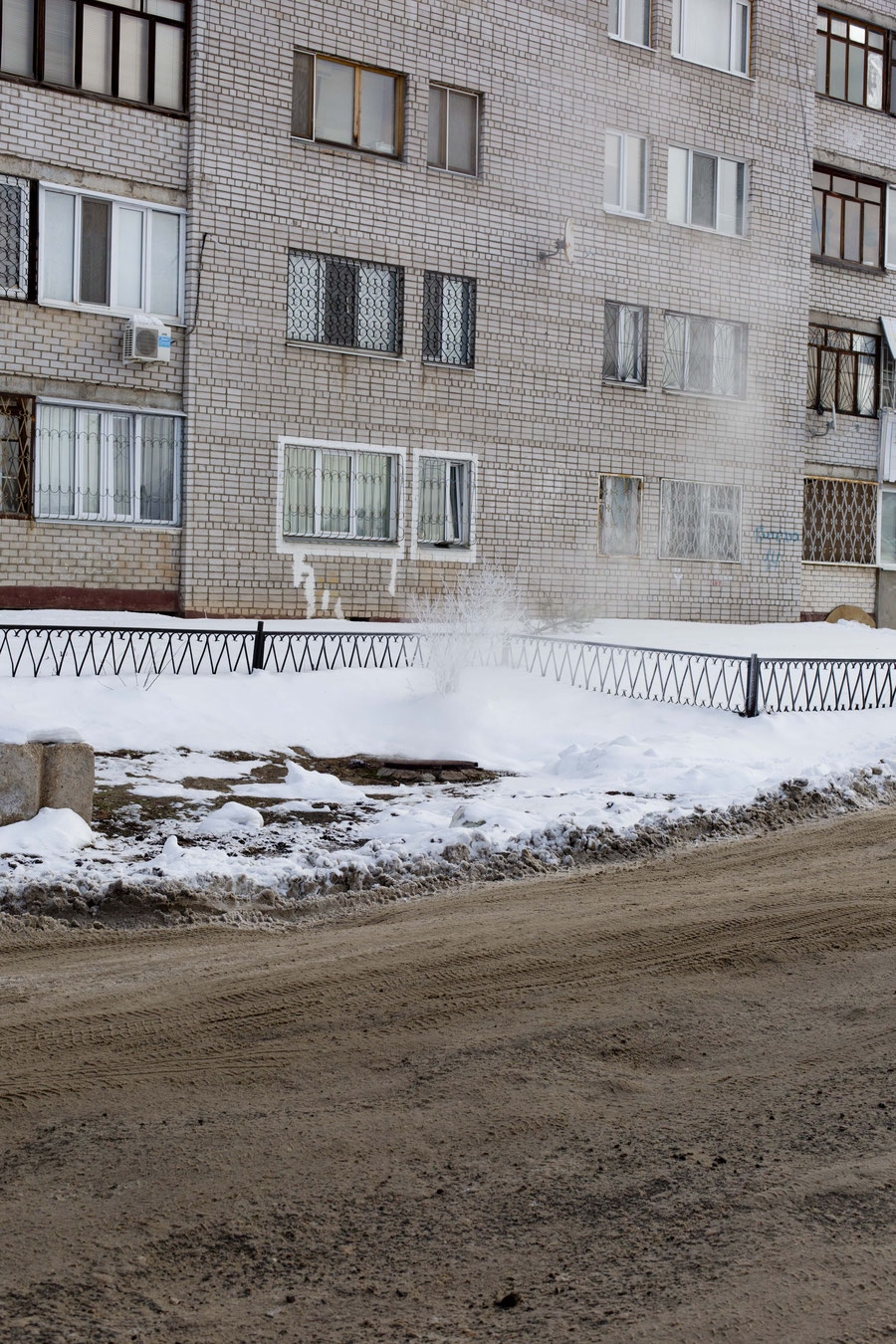People say there are only two seasons here in Samara: the summer and the winter. Spring and autumn are short, almost unnoticeable. Of course, this is only true if you think that winter lasts as long as snow is falling and summer as long as it doesn't rain. Of course in actuality, you can feel, see and smell both spring and autumn (I presume).
I arrived with winter in full swing. What I saw was the ground, covered with a thick layer of ice and at least one meter of snow. The side streets had deep icy lanes where the wheels couldn't deviate from, although the main roads were mostly kept clean. The pedestrian paths were covered by ice and freshly fallen snow. On the beaches along the river, we sank into snow that reached over our knees, in parks the pedestrian paths were cleared. However, a thick layer of ice and snow lay were the green lawns of summer would one day be. I have never seen as many huge snowmen as in Samara.
Then, more and more frequently, it became -10°C, instead of the usual -25°C. The wind stopped biting, and the sun made a few cautious appearances. In the sunshine, I decided to wear my jacket, instead of the down coat from my Russian family. It was commented on with head shaking. Although the sun was shining, and I in my thoroughly thought through outdoor layers, it was considered too early to wear something that looked like a spring jacket (it isn't a spring jacket although it could be). Nothing seems to be worse, than being a little cold, here in Samara.
The first days when the temperatures reached 0°C were heavenly. The sun tickled my skin and was harshly reflected by the snow. My sunglasses came into play almost immediately. The combination of snow and light overwhelm me. The sun tickled not only my skin but also the snow masses. At first, I noticed this only a little. The melting snow, hence water, usually found its way under or between the snow and the ice masses. Since the temperatures were not consistent, it thawed in one day and froze the next. The thick icy snow layer became a bit brownish in some places. But there was also a remedy: the fresh new snow, which fell in thin layers from the sky. It was just enough to conceal the ugly aspects of spring a little longer.
The side streets slowly turned into a greyish brown, with the consistency of a dry, but granular mass. In some places the ice became visible, revealing the actual reason for all the bumps and uneven holes in the road. In other places, men with iron pegs were breaking the ice by force, thus speeding up the universal meltdown and removing some particularly dangerous holes. The snow at the edge of the road turned from white homogeneous masses into a kind of greyish mountain range. The melting snow flowed down in its liquid, heavier form, leaving delicate sharp ice peaks. They looked like mountain ranges, like the Alps from an aeroplane, only much smaller. The snow mountains didn't shrink. They only became less dense. That was the time when I was able to smell spring for the first time. Around the garbage cans, a sweet smell lingered in the air. The remains of food, probably extracted from street dogs, started where it left off six months ago and slowly decomposed. Although the smell was discreet, I began to understand why spring had such a bad reputation down here. The same was happening on the roads. The indiscretions of the last six months, the garbage and the packaging, carelessly thrown on the street, reappeared and thus presented natures bill to humanity.
On the street and the frequently used tracks, everything happens a little faster than in other places. I can see a bit of asphalt for the first time on the road, and it becomes apparent that ice has created ninety percent of the crazy deep holes. With the dew, the worst roads became usable again, even to my Western eyes. The impression of the wild east slowly subsides.
As soon as the roads are free again, and the defrosting seems to be stagnating, the less used pedestrian paths begin to go through the same process. Under the ice and the snow are the gloriously muddy layers of autumn leaves and dog poop. It isn't pretty. The one thing that spring does very effectively is presenting the list of sins from winter.
The water rushes down the streets in small brown waves and finds its way into the Volga. The river begins to swell but as it's strongly regulated by numerous dams, that it will only become apparent towards the end of spring, in May. In just a few days, the ice layer broke, its remains were carried down the river and then disappeared into the water. There is so much of it on the streets that when I walked around with headphones and heard wave sounds, I turned around, wondering and in the expectation of a big wave, most likely triggered by a car driving into a ditch. Of course it wasn't. It was just a little wave sound on a podcast.









Write a comment